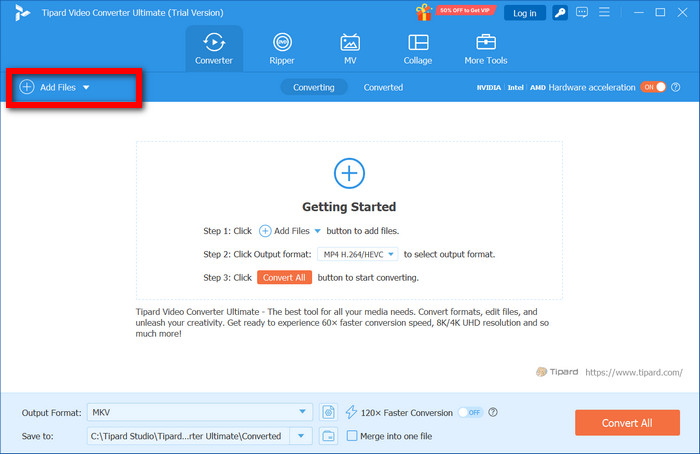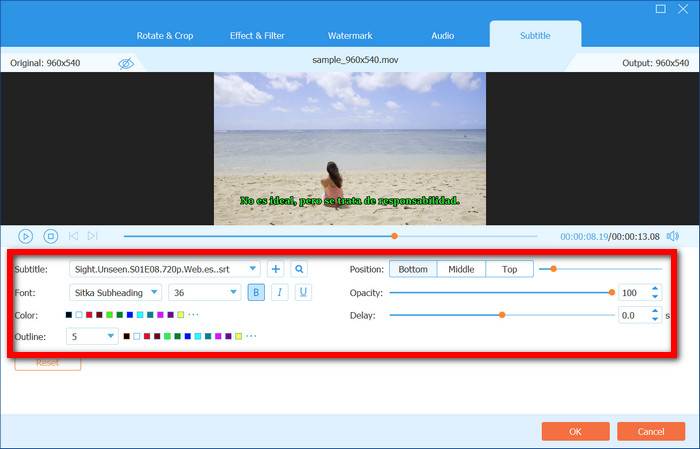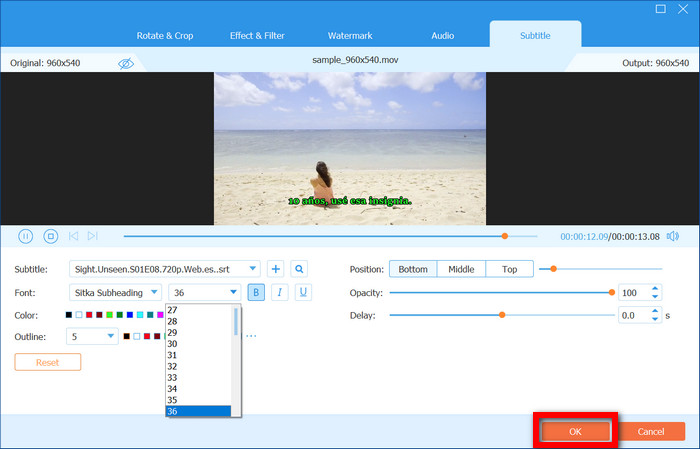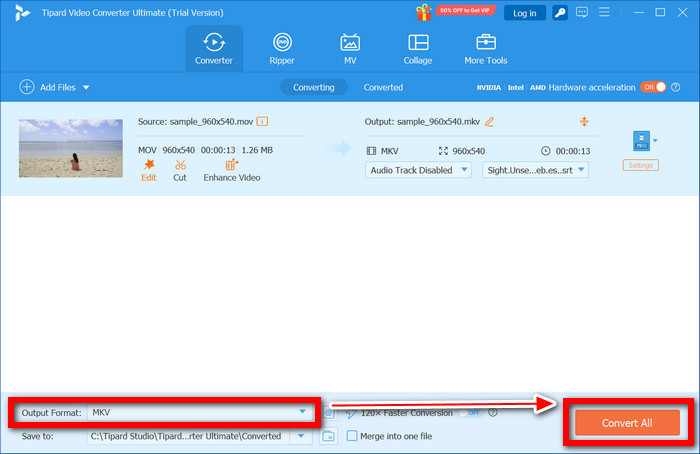Recognizing the differences between closed captions vs subtitles is crucial when considering the right choice for captioning your video. Closed captions (CC) convey the complete audio - dialogue, sound effects, and speaker identification. Thus, subtitles serve better when there are foreign audiences or other language speakers, as they only transcribe the spoken language. In this article, we will look at the significant differences, applications, and even legal aspects. Then, we will provide step-by-step instructions on how to add captions or video subtitles via Tipard Video Converter Ultimate.

Part 1. Closed Captions vs. Subtitles
Closed captions and subtitles both entail text displayed on the screen. However, they each serve a different and unique function. CC is meant for accessibility and inclusiveness. Hence, a more accommodating definition includes dialogue and sound effects. It is more complicated than just translating the language, which is all that subtitles offer. Knowing the difference helps to decide which usage is appropriate for the media type.
Definition
Closed Captions (CC): Refers to text that conveys spoken words and non-spoken features such as sound effects and speaker identifications. To ensure accessibility, CC captures everything that can be described about the content aside from audio.
Subtitles: Basic transcriptions of spoken dialogue for an audience that speaks a different language; free subtitles do not include speaker identification and other relevant sound effects.
Designed For
Closed Captions: Accommodates the Deaf and Hard of Hearing community by converting dialogue and other sounds into text.
Subtitles: Aim to assist those who know how to speak the language but cannot comprehend the audio. Subtitles are not primarily made for deaf people.
Where to Use
| Feature | Closed Captions | Subtitles |
|---|---|---|
| TV Broadcasts | ✅ Required by law in many countries | ✅ Often used for multilingual content |
| Streaming Platforms | ✅ Available on most platforms (Netflix, YouTube, Hulu, etc.) | ✅ Used for language options |
| DVDs/Blu-rays | ✅ Commonly included for accessibility | ✅ Found in international releases |
| Social Media | ✅ Recommended for better engagement | ✅ Often auto-generated or user-uploaded |
| Movie Theaters | ❌ Rarely used | ✅ Frequently included in foreign films |
| Show MoreShow Less | ||
Who Can Use Them
Closed Captions: Helpful for hearing challenges, but also in other loud settings such as gyms and airports, and when the audio cannot be turned up, like in the case of silent mode on cell phones.
Subtitles: This benefits individuals who want to learn a new language by allowing students to read, hear, and practice spoken words while listening. It also benefits people who can hear but don’t understand the spoken language.
Format and Display
| Feature | Closed Captions | Subtitles |
|---|---|---|
| Display Style | White text on a black background, adjustable on some platforms | Simple text at the bottom of the screen, often without a background |
| Customization | ✅ Change font, size, and color on supported platforms | ✅ Some customization available, but less than CC |
| Hardcoded | ❌ Usually optional and toggleable | ✅ Can be burned into the video (hardcoded) or optional |
| Speaker Indication | ✅ Names or symbols indicate who is speaking | ❌ No speaker differentiation |
| Sound Effects | ✅ Includes sound cues (e.g., [door creaks], [laughter]) | ❌ Only includes spoken dialogue |
| Show MoreShow Less | ||
Additional Features
Closed Captions: Includes all sounds that cannot be seen, including Sounds like (thunder rumbling, music playing); And who is speaking (John): "Hello!" Background sounds.
Subtitles: Only include the words that the character is saying, ignoring any other context, meanings, or sound effects.
Legal Aspects
Closed Captioning: Generally required by law for accessible usage in television programs and digital media. A few instances include:
- Captions are needed in television broadcasts per the FCC guidelines in the U.S.
- Public and private media content also falls under ADA compliance.
- Certain European Union Accessibility Acts also necessitate using captions for certain websites for some users.
Subtitles: Not strictly governed, yet popular for:
- Localization in films, streaming services, and video editing software.
- Distribution of foreign films outside their native language borders.
Part 2. Quick Comparison of Closed Captions and Subtitles
Though closed captions and subtitles serve the same purpose of conveying visual information, they differ significantly in functionality and purpose. The following table presents a brief comparison and shows that while closed captions serve an accessibility function, subtitles primarily serve the purpose of translation. Knowing the differences ensures that the various viewing requirements are provided accordingly.
| Feature | Closed Captions (CC) | Subtitle |
|---|---|---|
| Includes Sound Effects & Speaker Identification | ✓ | ✗ |
| Only Displays Spoken Dialogue | ✗ | ✓ |
| Used for Accessibility (Hearing Impairment) | ✓ | ✗ |
| Used for Language Translation | ✗ | ✓ |
| Available in Multiple Languages | ✗ | ✓ |
| Can Be Turned On/Off | ✓ | ✓ |
| Can Be Hardcoded (Always Visible) | ✗ | ✓ |
| Available in Live TV & Broadcasts | ✓ | ✗ |
| Common in Movies & Streaming Services | ✓ | ✓ |
| Includes Non-Verbal Sounds (Laughter, Music, etc.) | ✓ | ✗ |
| Helps in Noisy or Silent Environments | ✓ | ✓ |
| Legally Required for Accessibility | ✓ | ✗ |
| Customizable (Font, Size, Background, etc.) | ✓ | ✓ |
| Used in Foreign Films & Shows | ✗ | ✓ |
| Show MoreShow Less | ||
Part 3. How to Add Closed Captions or Subtitles to a Video
Closed captions or subtitles are integral to any video because they cater to accessibility, audience participation, and global reach. Regardless of whether the content is meant for social media streaming sites or personal use, adding captions increases the understanding and inclusiveness of the videos. It is simple to add, alter, and customize the captions as you desire using Tipard Video Converter Ultimate.
- Import external subtitle files (SRT, ASS, SSA) or create new ones directly.
- Overlay custom text, annotations, and closed captions to provide extra context.
- Enhance videos with filters, transitions, and slideshows while keeping subtitles aligned.
- Customize subtitle font, size, color, background, and positioning for better readability.
- Fine-tune subtitles to align with dialogue or narration perfectly.

Step 1Download and Install Tipard Video Converter Ultimate
Head to the official website to download Tipard Video Converter Ultimate to get started. Follow the provided instructions to install the software into your PC. When installation is complete, launch the program so that we can get started.
Step 2Load the Video File
Click on Add Files to add the video file to which you wish to add subtitles. Alternatively, you can drag and drop the video into the software interface.

Step 3Add or Import Subtitles
Now, navigate to Edit and from there to the Subtitle tab. Click on Add Subtitle to import your external subtitle file, which can be of either SRT, ASS, or SSA format. If no subtitle file is available, the software also provides an option for manual subtitle file creation.

Step 4Edit and Customize Subtitles
Change subtitle font style, size, color, background, opacity, and position on the screen to make it more visible. Finally, for any adjustments made, click on the OK button to apply the changes.

Step 5Adjust Subtitle Timing Manually
Syncing subtitles to the video is very important, so make sure that subtitles are perfectly synced with the video. Adjust for dialogue timing and set start and end times that are most accurate. From there, you can choose your preferred output format of the video file, be it MP4, MKV, or AVI.

Step 6Export the Video
The Tipard converter lets you click on Convert All to process the video with the embedded subtitles. Your video can now be played anytime with the captions, and that is complete.

Conclusion
All in all, what closed captioning vs subtitles are comes down to their purpose - closed captions provide full audio descriptions for accessibility, while subtitles focus on translating spoken dialogue. Adding them enhances video accessibility, comprehension, and engagement for diverse audiences worldwide.






